Long beaches, high dunes and lively cities by the water: Denmark offers a wealth of attractions, sights and hotspots that should not be missed. In addition to excursion destinations in nature, Denmark also has impressive castles, colourful amusement parks and interesting museums to offer. We have put together a selection of sights for you here so that you can fully immerse yourself in the vibrant culture of the small country in Northern Europe!
Sightseeing in Copenhagen: the lively capital city of Denmark
Copenhagen is not only a real travel tip for insiders – the vibrant city on the Öresund is green, lively and offers all kinds of attractions for young and old. A walk through the old town, along the canals and past the colourful little houses and boats is worth experiencing in itself.
Tivoli
The Tivoli amusement park is particularly special because it is located in the centre of the city. When you step through the gate at the entrance, you suddenly find yourself in a fairytale world. The park was opened back in 1843, but all the new buildings were also designed in a historical style. Tivoli is therefore not only a popular attraction for the whole family because of the rides, but is also worth a stroll as well as the concerts and theatre plays that take place on site.
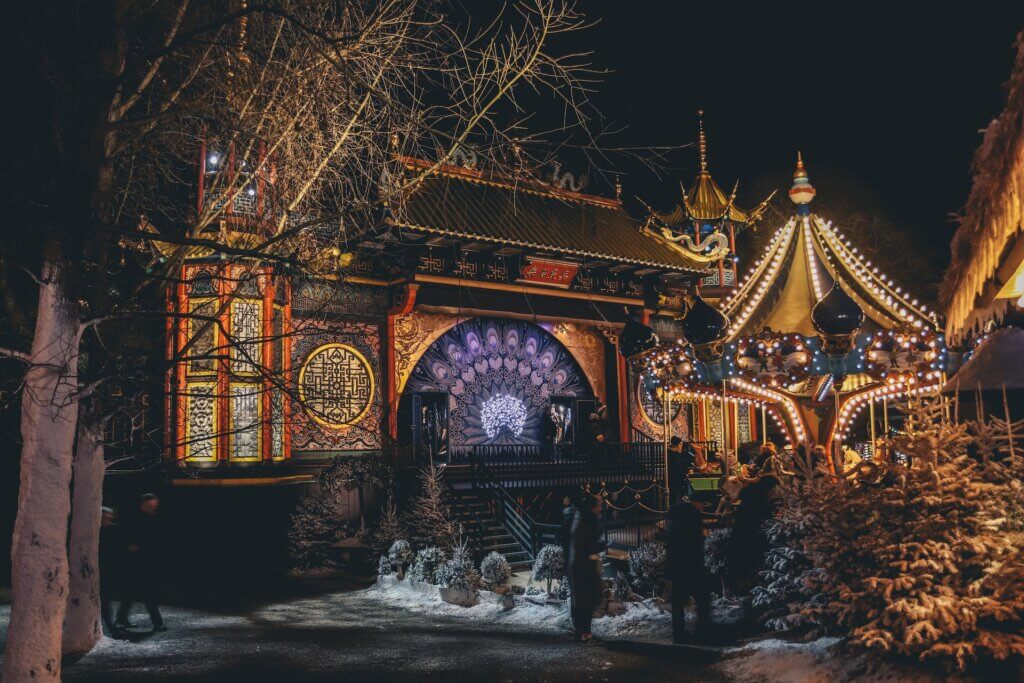
It is particularly romantic at Christmas time, when a Christmas market is set up. This ambience can also be felt all year round in the evening, when the world’s second oldest operating amusement park is colourfully illuminated.
The Little Mermaid
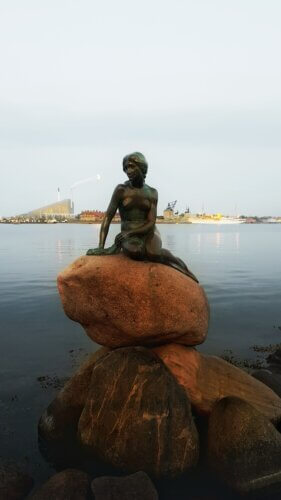
For many, she is the symbol of Denmark: the Little Mermaid (Danish: Den lille Havfrue), who sits on a rock on Copenhagen’s green Langelinie waterfront promenade.
At just 125 cm tall, the bronze figure is one of the smallest landmarks in the world, but perhaps that is why it attracts visitors from all over the world.
The petite sculpture is modelled after the title figure from Hans Christian Andersen’s fairy tale of the same name, which is probably one of the most famous works of Danish literature.
The Little Mermaid has been watching over the capital since 1913 and is one of the most popular motifs for photos – which is why she is often surrounded by visitors.
Nyhavn
The most popular and probably best-known corner of Copenhagen for tourists is Nyhavn, which has become the city’s landmark. With its colourful row of houses directly on the canal, the harbour is not only a wonderful photo spot, but also a good place to experience the lively side of the city in both summer and winter. In summer, you can enjoy a cold beer in one of the many restaurants here, while a cosy Christmas market with glögg beckons during the festive season.
Nyhavn was originally the city’s trading harbour, which is why pubs and bars were established here. Many famous artists also lived in the historic houses, including Hans Christian Andersen.
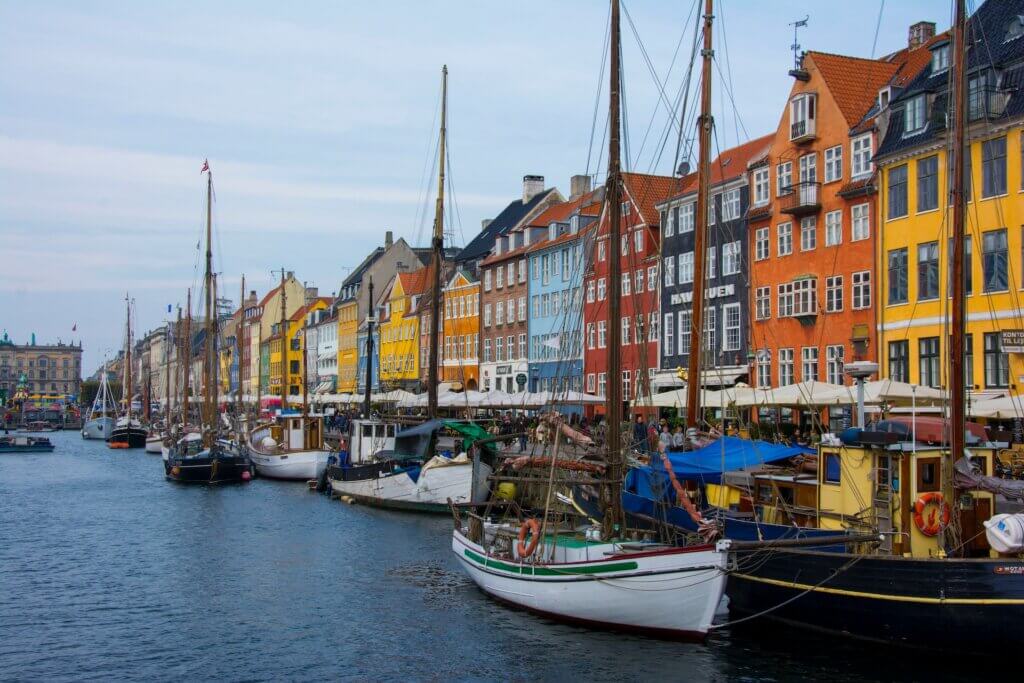
Dyrehavsbakken
Only one amusement park is older than the Tivoli – and fittingly, it is almost next door, as Dyrehavsbakken – or simply Bakken for short – is also located in Copenhagen, and is the oldest still-operating amusement park in the world. It is located on the northern outskirts of Copenhagen in an idyllic setting in the Jægersborg Dyrehaven park.
The Bakken was opened back in 1583 when a natural spring was discovered. The natural idyll quickly developed into an excursion destination and retreat as a contrast to the hectic city life – and the park still focuses on tradition and nostalgia today, but also has some modern attractions and rides.
Amalienborg Palace
Amalienborg Palace is the city residence of the Danish Queen. It consists of four almost identical palaces located around Amalienborg Palace Square. Here you can learn more about the Danish monarchy and its history in the Royal Museum and see parts of the complex from the inside.
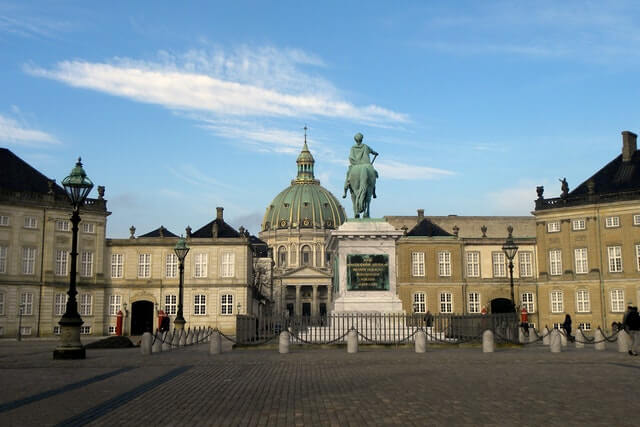
The daily changing of the Royal Guard at 12 noon is particularly interesting. With their fur hats, they look very similar to the British guards in front of Buckingham Palace. We also recommend a walk through the surrounding neighbourhood, which was laid out around the palace and has some impressive buildings to offer, such as the Frederiks Kirke in rococo style or numerous baroque buildings.
More sights on Zealand
The island of Zealand (Danish: Sjælland) is the largest island in Denmark. It is of course best known for its capital Copenhagen, but has much more to offer, especially in terms of culture.
Roskilde
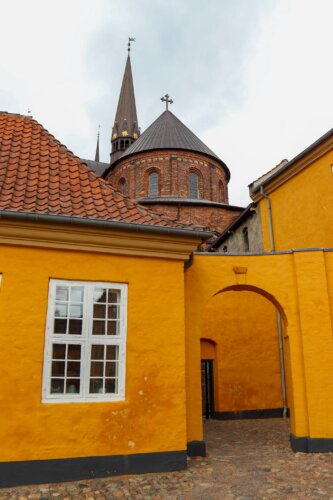
The name Roskilde is particularly well known to music fans – one of Europe’s most famous festivals takes place in the town on the Roskildefjord every summer. But the city has even more to offer – in addition to beautiful nature that invites you to hike and explore, it also has an impressive history.
Roskilde is one of the oldest cities in the country, dating back to 998, and was the capital of Denmark and seat of kings until the Middle Ages in 1443 – a fact that is also reflected in the cityscape, as the early Danish culture and traditions can still be felt, whether in the impressive Roskilde Cathedral or in one of the city’s interesting museums.
Kronborg Castle
The town of Helsingør is located in the north-east of Zealand, just five kilometres as the crow flies from the Swedish city of Helsingborg on the other side of the Öresund. The town not only has an important harbour, but also one of the country’s most famous castles: Kronborg Castle.
The fortress was built in the 15th century and has guarded the entrance to the Öresund ever since. Over the centuries, it has been repeatedly extended and remodelled and is now considered one of the most beautiful castles of the Nordic Renaissance. However, it is best known thanks to an Englishman: William Shakespeare chose Kronborg as the setting for his tragedy Hamlet.
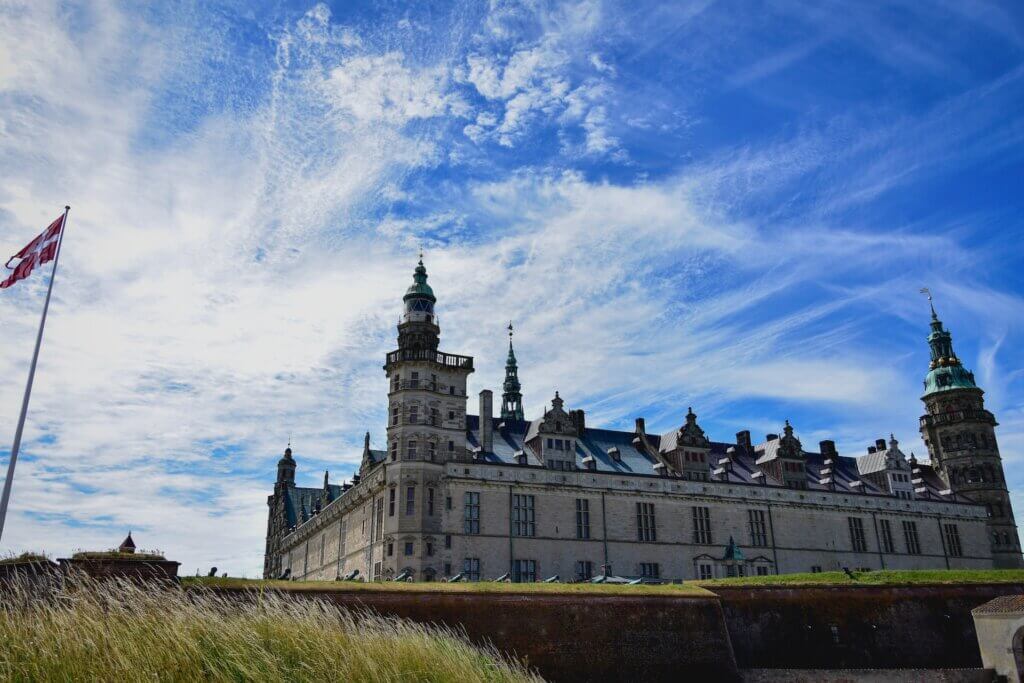
Sights on Denmark’s west coast
The west of Denmark is characterised by long beaches, small coastal towns and (in the southern part) the Wadden Sea. The west coast is also historically very interesting, as there are numerous bunkers from the Second World War that can be visited today.
Rømø
Rømø is the southernmost Danish North Sea island and is a popular holiday destination – not least because of its 20 kilometre long and up to six kilometre wide sandy beach, which is the widest beach in Europe. In total, 40% of Rømø consists of sand and also offers, for example, a drivable car beach.
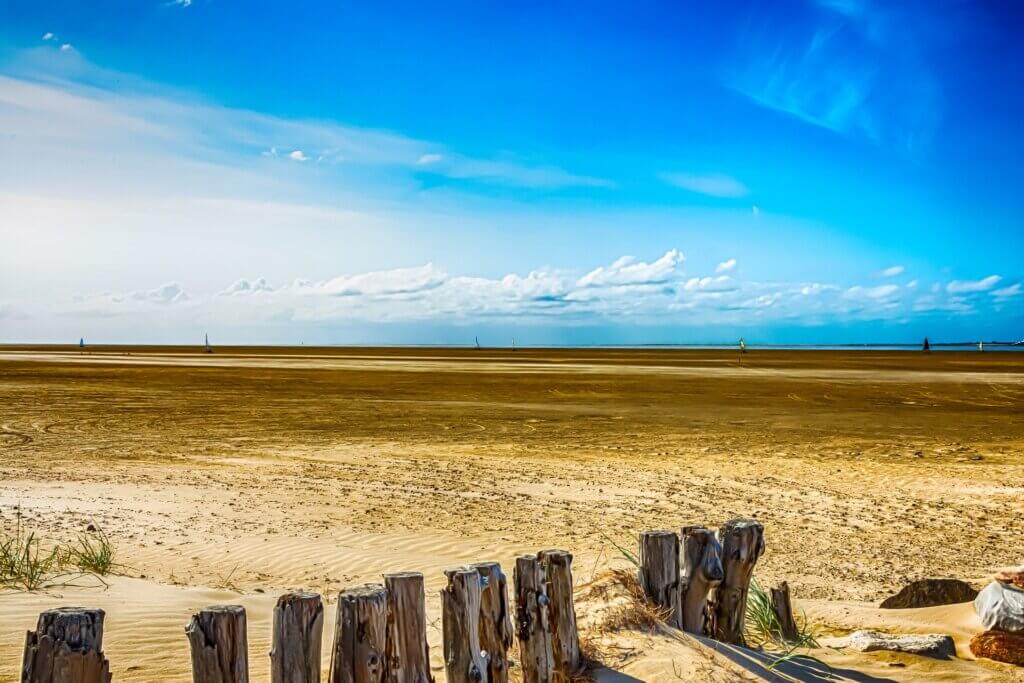
In addition to relaxing, sunbathing and splashing around, there are also active tours around Rømø. Classic mudflat walks are particularly popular, but oyster safaris and prawn fishing are also on offer. A total of 52 bunkers from the Second World War can also be visited on tours or on your own.
Rubjerg Knude
Rubjerg Knude is an impressive shifting sand dune between Lønstrup and Løkken, which is a landmark of the region. It can be up to 1900 metres long, 400 metres wide and is around 70 metres high. The climb up the dune is not easy, but it is worth it, as you have a fantastic view of the sea and the North Jutland region from here. The lighthouse, which was moved 70 metres inland in 2019 due to the risk of falling, is also worth a visit.
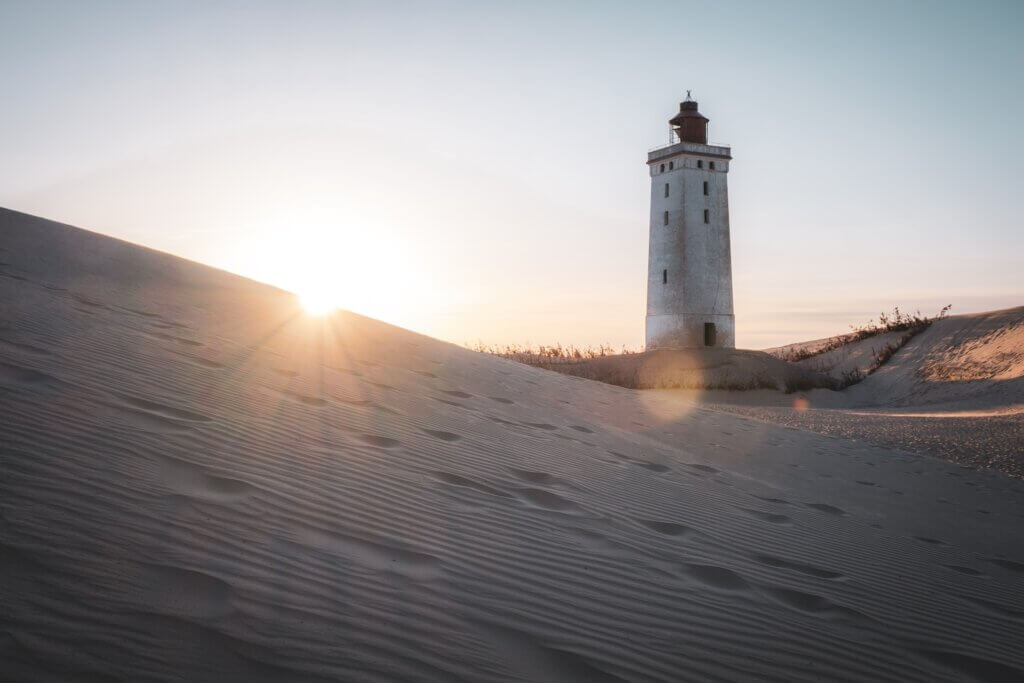
Denmark: sights in the south
Southern Denmark comprises the southern part of the mainland or Jutland. It lies between the North Sea and the Baltic Sea and is also characterised by its proximity to Germany. Here, too, there are beautiful beaches on the Wadden Sea, as well as cosy and historic towns.
Danish Wadden Sea
The Danish Wadden Sea National Park is located between the Skallingen peninsula and the border with Germany on the country’s west coast and is the perfect place for outdoor activities. Since 2014, it has been part of the international UNESCO Wadden Sea World Heritage Site, which previously stretched across Germany and the Netherlands.
The Wadden Sea is a natural paradise with a wide variety of animals, including a large number of seabirds, seals and, of course, fish, mussels and the well-known lugworms. To find out more about these animals and the Wadden Sea itself, you can go on mudflat walks or visit museums and research centres.
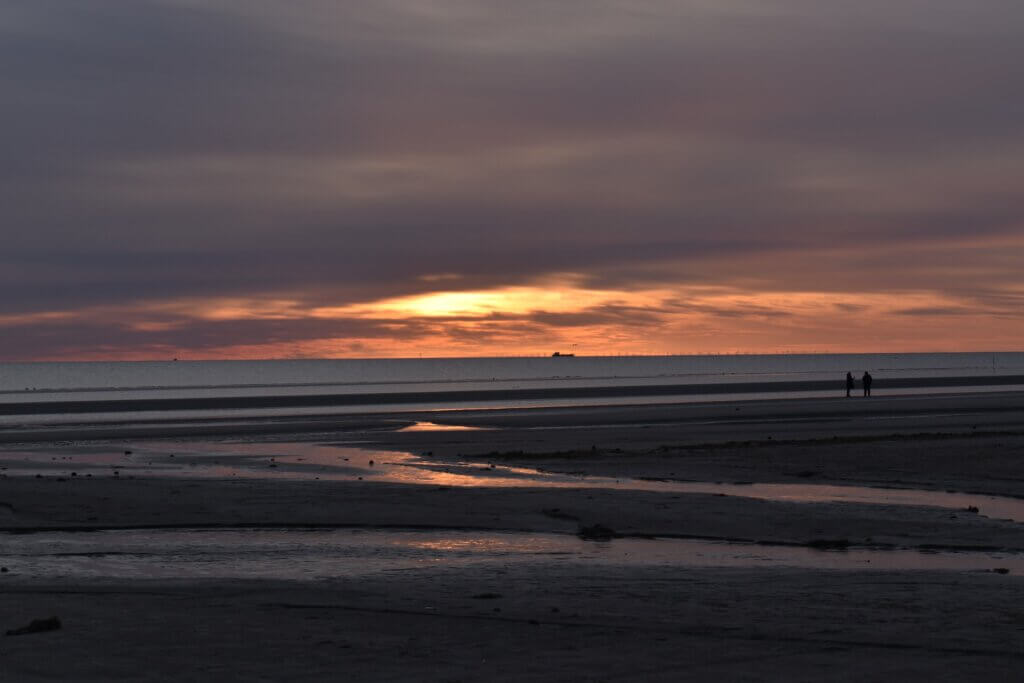
Ribe
The oldest town in Denmark is the charming town of Ribe in the south of the country. The town’s long history is omnipresent, and a leisurely stroll through the picturesque medieval old town is highly recommended. A detour to Ribe Cathedral or one of the interesting museums is also recommended.
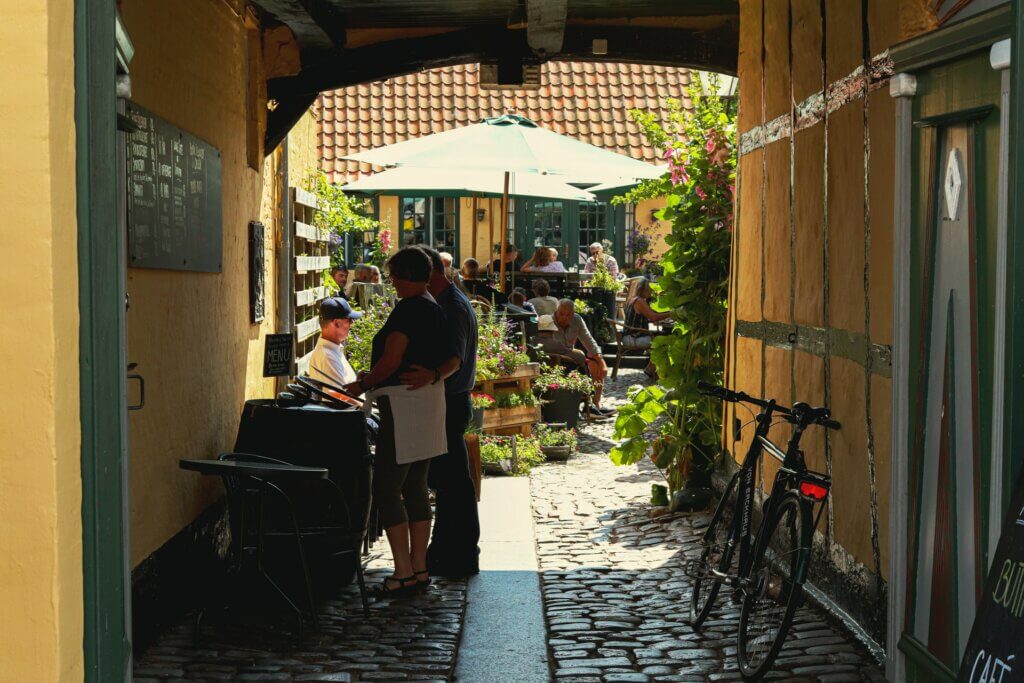
Legoland Billund Resort
One of the best-known Danish brands is Lego, which has its origins and headquarters in Billund in southern Jutland. Here you will also find Legoland Billund Resort, which opened in 1968 and is the oldest Legoland in the world and the largest Danish tourist attraction outside Copenhagen.
Legoland Billund Resort is best known for its Miniland, where over 20 million bricks are used to recreate famous locations in miniature. Further, there are eight other themed areas.
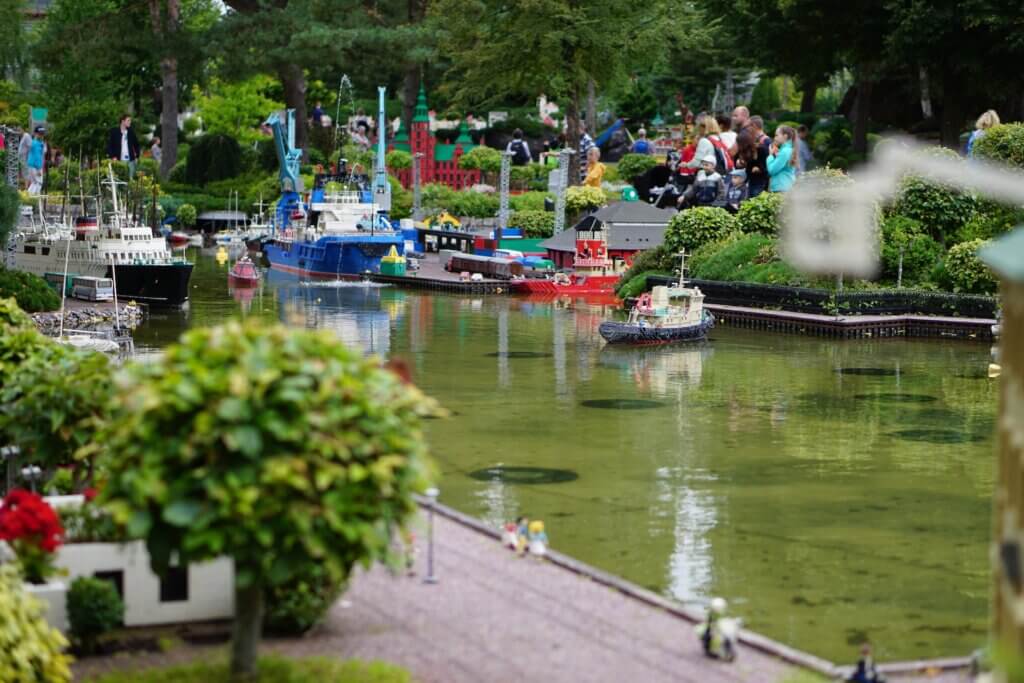
Denmark: sightseeing spots on the Baltic Sea islands
Eastern Denmark stretches across numerous islands in the Baltic Sea. In addition to Zealand, these include Funen, Langeland, Lolland, Falster and Bornholm, which lies very far to the east. The islands have very different characteristics – but beautiful beaches can be found everywhere. So you can immerse yourself in a wide variety of island worlds.
Odense
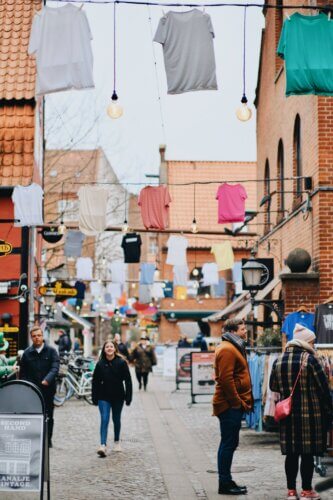
Odense is a large city with a lively, cosmopolitan and yet cosy flair. The idyllic capital of the island of Funen lives from its culture and history, which can be felt almost everywhere, whether in museums, parks or the city centre.
The town is best known and characterised by the Danish national poet Hans Christian Andersen, who was born here and found inspiration for many of his stories. “Andersen’s footprints” can be found throughout the city and can be followed and used to explore Odense.
An outing to the open-air museum “Den Fynske Landsby” is also worth the time. In the carefully designed museum complex, you can get to know the rural Funen of the past among 25 historic houses and dressed-up showmen.
Møns Klint
Møns Klint is one of the most famous sights in the east of the island of Møn. The limestone cliff in the east of the island is 6 kilometres long and 129 metres high at its highest point. A little further inland, the chalk cliff reaches a height of 143 metres. However, the 70 million year old cliff is often the scene of chalk falls. It is therefore not entirely safe to be below the cliff. If you want to visit the cliff, you can take one of the small stairs down to the beach. The 497 steps of the main stair are particularly famous.
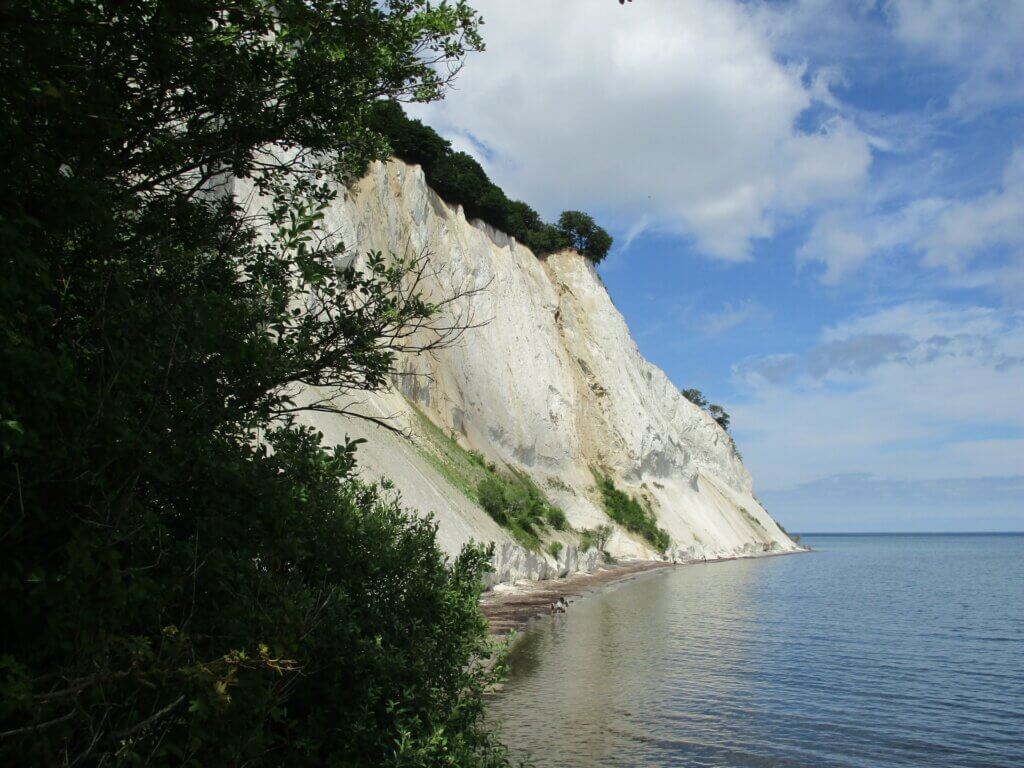
Hammershus medieval fortress
On the island of Bornholm, the “Capri of the North”, you will not only find beautiful beaches, fantastic hiking trails and picturesque coastal villages, but also a special historical site, Hammershus, which is also one of the largest castle ruins in Northern Europe.
The former fortress, which was built in the 13th century and abandoned in 1743, lies 74 metres above sea level and was very difficult to conquer. Today, Hammershus and its visitor centre offer a journey back to medieval Denmark.
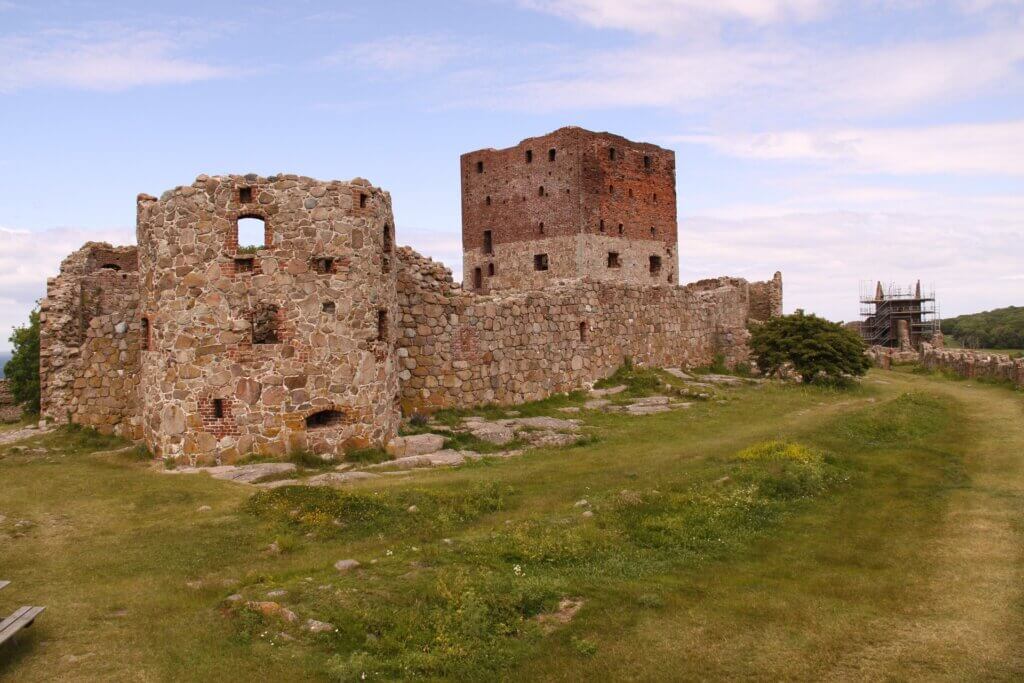
Viking sights in Denmark
Denmark’s history is long and intense – characterised above all by the Vikings, who reigned over the seas and coastal regions during the 10th century. Accordingly, remnants and attractions of this special culture can be found throughout the country, making the past tangible and alive.
Viking Ship Museum in Roskilde
The Roskilde Viking Ship Museum is a highlight and must-visit not only for history and culture fans, as it is one of the most important exhibition centres for original finds from the Viking Age. The museum was established in 1969 after five Viking ships were excavated in the Roskilde Fjord six years earlier, which were sunk around 1070 to protect and control the main navigation channel of the fjord. The five recovered ships are the museum’s main exhibits, but there are also many other exhibits and replicas of boats on display in the museum.
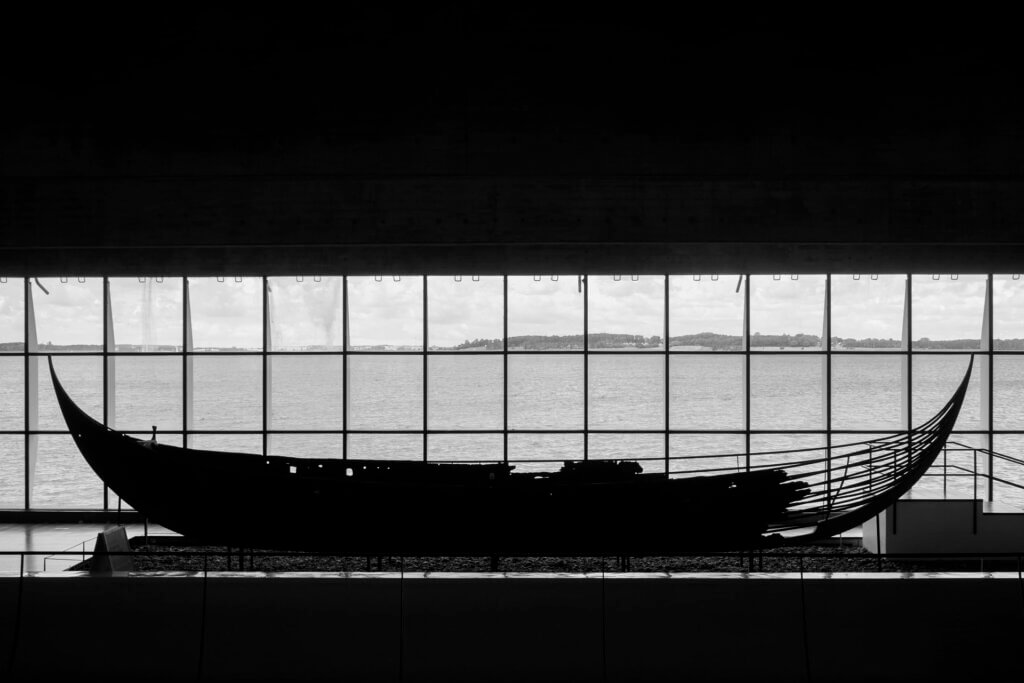
The rune stones of Jelling
The rune stones of Jelling in the southern part of Jutland have a particularly high significance in Danish history: they were created in the 10th century and are regarded as the country’s birth certificate and baptismal certificate. On the small Jelling Stone, which was erected on the initiative of the first Danish king Gorm, the country’s name Denmark is mentioned in writing for the first time, while the large Jelling Stone tells of the Christianisation of Denmark by Harald Blåtand (engl: Harald Bluetooth).
The stones are located by two burial mounds, between which lies the church of Jelling, built in 1100, which is also worth a visit. There is also a museum dedicated to the history of the stones and the Viking kings.
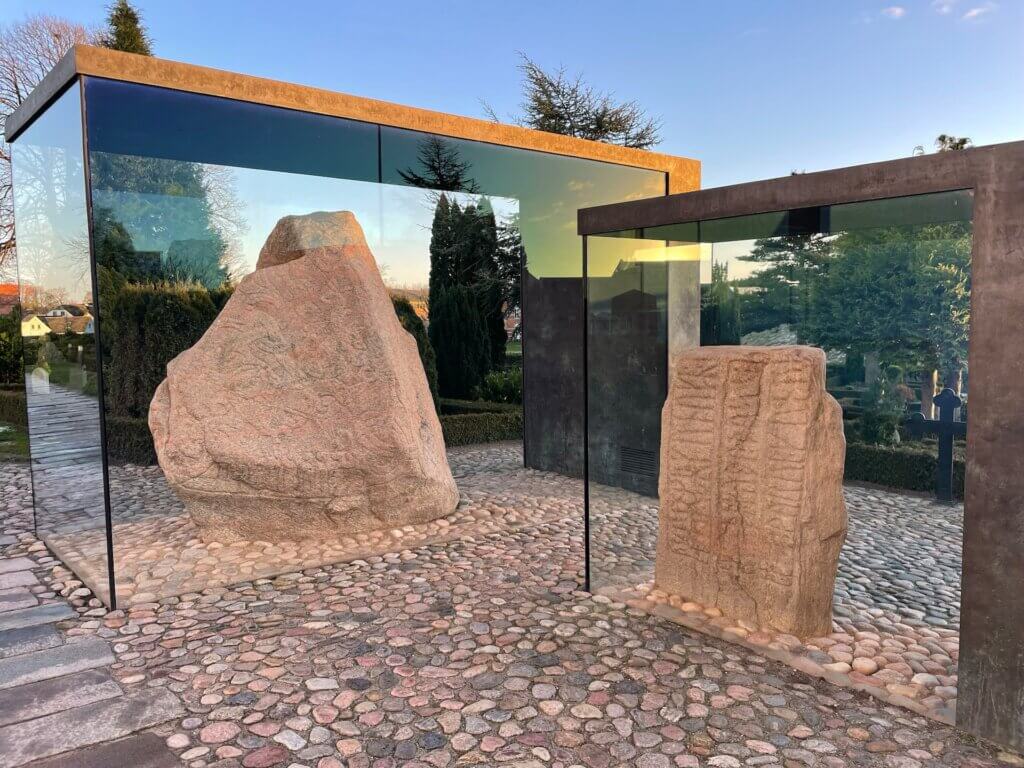
Ribe Viking Centre
History is alive and well in Ribe, the oldest town in Denmark – and the Ribe VikingCentre is no exception. It shows reconstructions from the period of 710-980 A.D. For example, you can visit the market square in 710 or a manor in 980 and experience the Viking and Middle Ages up close.
Activities such as archery, falconry shows, minting coins and more are also on offer. Traditional Viking food can also be savoured. All in all, the Viking Centre in Ribe is one of the best ways in Scandinavia to immerse yourself in the Viking Age.